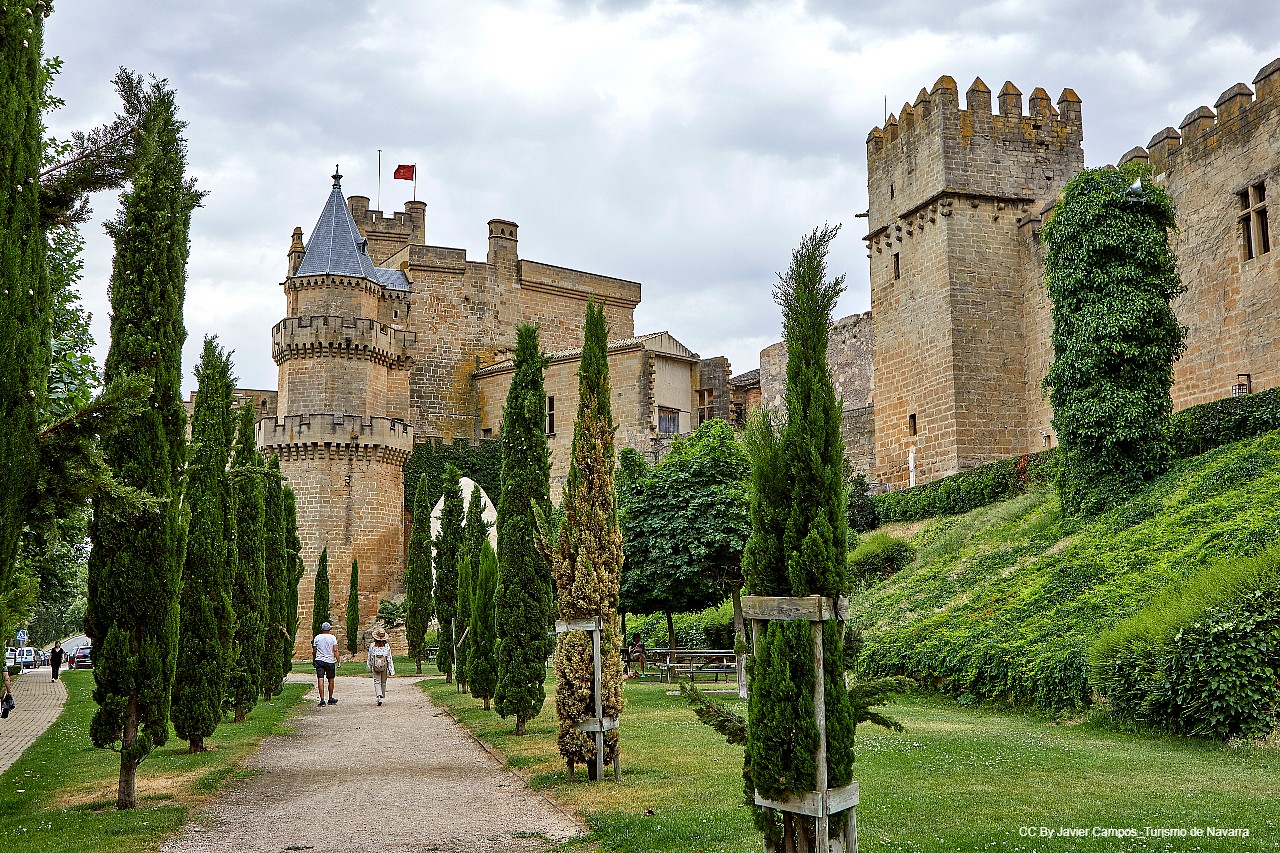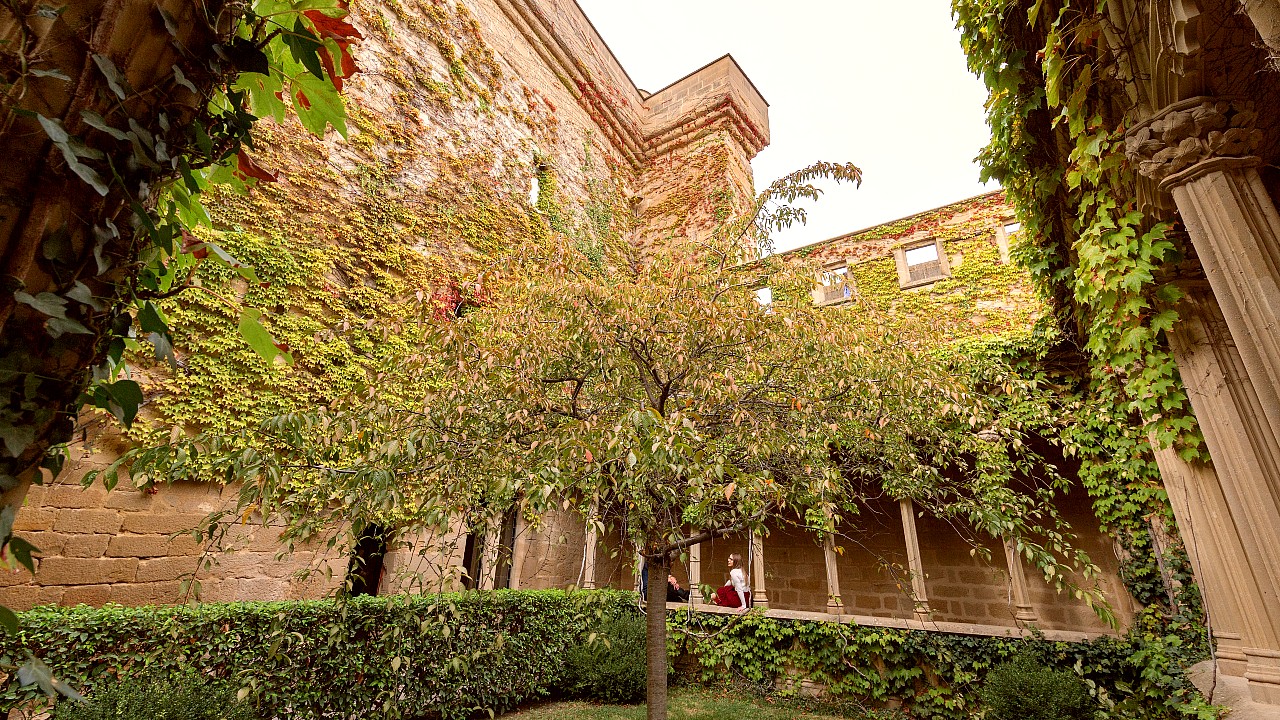
Visiting the castle of Olite is entering one of the most representative enclaves of the Middle Zone of Navarra. In fact, the set occupies a third of the surface of the medieval center of the municipality. The palace is an indispensable part of Olite's life. It is the venue, for example, of the Theater Festival that is held every summer and an inescapable postcard of its medieval festivals.
When we talk about the Royal Palace of Olite, we are actually referring to only one of the buildings that make up the monumental complex: the New Palace. This is undoubtedly the most extensive and emblematic part. The King and Queen of Navarra built it once the Old Palace outgrew it, now converted into a national tourist hostel.

When Carlos III the Noble and his wife Leonor de Trastámara ordered its construction in 1402, surely they already had in mind a work as monumental as the Royal Palace of Olite ended up being. In just 22 years, an ambitious project was completed that included seven towers, a wall, gardens and an exquisite and opulent decoration with all kinds of details so that the kings could enjoy luxuries that were unusual at the time.
The architecture of the palace leaves no doubt about the French origin of Charles III, who belonged to the d'Evreux dynasty. The obvious French Gothic features of the exterior blend perfectly with the influence of Mudejar art in its interior decoration.
Unfortunately, the palace suffered a devastating fire in 1813 and it was not until its reconstruction, at the beginning of the following century, that one of the most important Gothic civil buildings in Europe could be seen again in all its splendor. So much so, that in 1925 it was considered a National Monument.

Neither the New Palace nor the Old Palace, despite their walls and towers, were intended as defensive fortresses. Both were conceived for retirement and peace. As you will see during your visit, the Royal Palace of Olite was one of the most sumptuous palaces in Europe, geared towards enjoyment and culture. During your visit, discover its galleries, its royal chambers and its gardens, which once housed a zoo of exotic animals.
⭐ Advice! If you stand at the foot of the Three Crowns Tower, on the other side of the main entrance of the Royal Palace, you will enjoy one of the most impressive views of the monumental complex.
*Last tickets sold thirty minutes before closing time
✔️Store
✔️Services with changing table for babies
✔️Elevator
✔️Guided tours and audio guide
✔️Tickets on line
✔️Accessibility: The Palace is partially accessible for people with reduced mobility (there is an elevator that connects the ground floor with the first floor); It is not possible to access with pushchairs or baby strollers.
✔️Access to certified assistance and therapy animals (the certified document can be presented at the entrance of the enclosure)
Clarification regarding the general access of pets: The Royal Palace of Olite as a monument of Cultural Interest has the obligation to avoid any deterioration and preserve itself in the best possible conditions and for this reason, in its current condition of tour, access is not allowed general to pets except for certified service and therapy animals.
Currently some space of the Royal Palace of Olite may be undergoing works to improve heritage.


